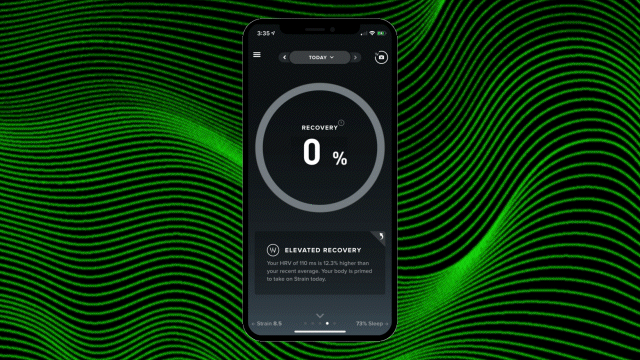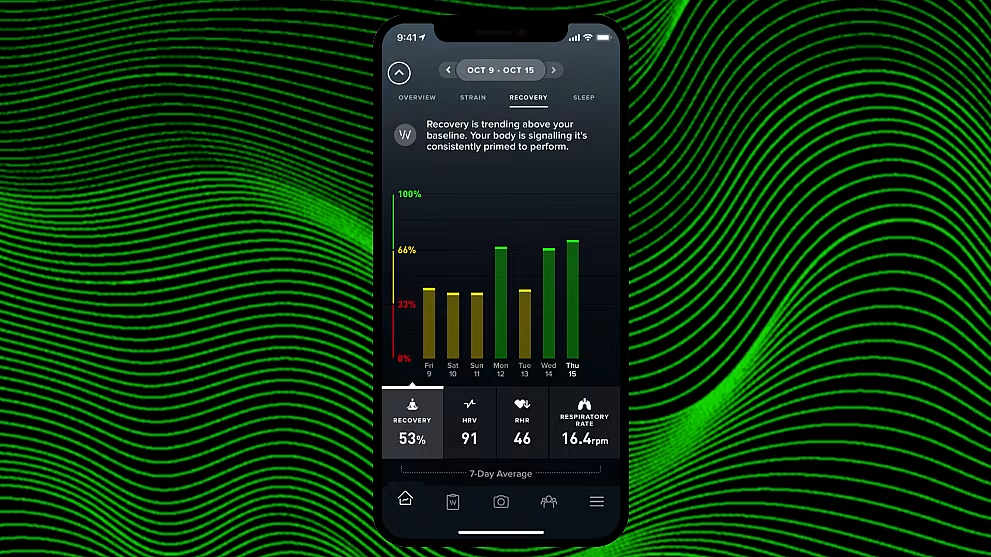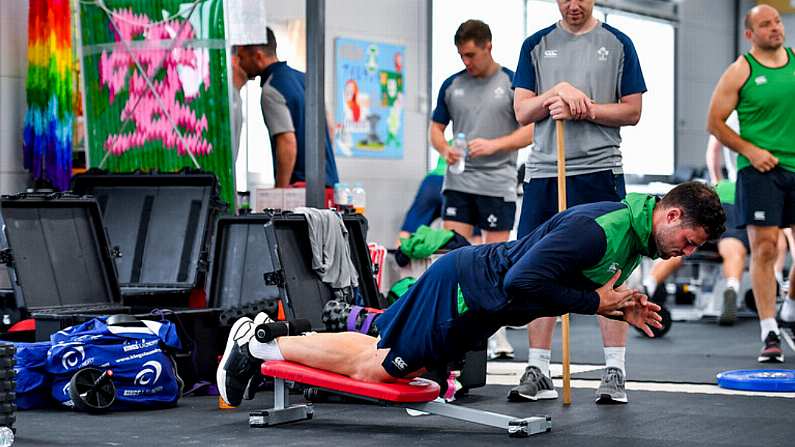You can't go at full tilt forever.
Be it a mountain stage of the Tour de France, the Leinster Senior Cup Final or a game of heads and volleys, your body needs to be able to recover from the rigours of activity.
In the third episode of our series 'WHOOP Diaries with Lauren Guilfoyle', we take a deep dive into how WHOOP can help you track your recovery and how your performance is impacted by the amount of rest and recovery you've undertaken. If you want to find out more on WHOOP and how it can help you with your recovery levels, click here.
How WHOOP Measures Recovery

WHOOP keeps it simple when it comes to its recovery colour scheme: green = good, yellow = maintenance, and red = bad.
WHOOP gives you insight into key biometrics like heart rate variability, resting heart rate, and sleep performance. With these in mind, you'll know when your body is ready to perform and when it needs rest.
The green range indicates your body is well recovered and ready to perform. Your body knows it can handle a strenuous day.
Your body is maintaining health in the yellow range. It can handle a moderately strenuous day and may not need rest.
The red zone, this shows that your body is working hard to recover. You could be in a hard training phase or just stressed, either way, it’s suggested to make time for rest and active recovery.
Know Your Body's Readiness

WHOOP gives you an inside look into how your body is adapting to things like stress, work, nutrition, training, and more. You can monitor your recovery in four categories.
With recovery itself, it defines how prepared your body is to take on the day.
A key indicator of training adaptation and overall health is heart rate variability (HRV). This is the time difference between each heartbeat.
For a look at the consistency of your heartbeat, resting heart rate (RHR) is taken every night during your deep sleep cycle.
WHOOP also measures your breathing by giving you your respiratory rate. A change in your median respiratory rate could indicate a variety of physiological changes.
Weekly and Monthly Performance Reports

Being able to pinpoint how your body needs to recover is a seemingly never-ending cycle. A lot of trial and error is involved, yet with the WHOOP Journal, you can see how tweaks in your training and recovery can impact your performance.
In her 'WHOOP Diary', Lauren logged stretching and yoga into her WHOOP Journal to see if it aided her recovery in the long run.
Your Monthly Performance Assessment will show you what’s detracting from your performance, and what’s improving your overall well-being at the end of each month.
That way you can tailor your training and recovery to suit YOU.
*********
Recovery is integral to ensuring that your performance can be maintained. Like we stated at the beginning, you can't go full tilt all the time.
WHOOP gives you the keys to unlock your performance, recognising when you should recover and when you'll be at your optimum.
You can look back on all of our 'Whoop Diaries With Lauren Guilfoyle' here.
If you want to find out more on WHOOP and how it can help you with your recovery levels, click here.













